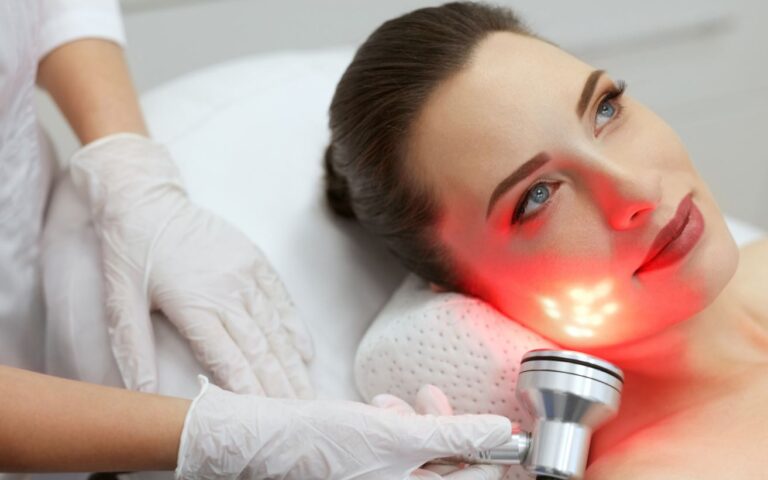Everything You Need to Know About Women and Pain
Pain is the leading cause of disability worldwide. More people miss work and have a reduced quality of life due to pain and pain-related diseases than any other health problem. For women, pain is especially problematic; not only do we experience pain more frequently than men, studies show that our pain is more intense, longer lasting and less often adequately treated than that of male patients. It’s a problem that reverberates in our personal, as well as our professional lives, affecting our families, our jobs and our everyday activities. And to date, we haven’t had a lot of success finding a lasting solution for our pain issues. We are often dismissed, with our perceived frailty and hysteria perpetuating misdiagnoses, as well as research and treatment disparities. Here’s what you need to know in order to advocate for your own pain relief:

Pain is Different for Men and Women
Studies show that men and women experience pain differently. A variety of factors, including genetics, progression of development, immune signals and hormone levels (among others), combine to make pain pathways vary between sexes and even among individuals. And, to top it all off, more recent research reveals gender identity plays a part in pain response, as well. Put plainly, it’s not in our heads, ladies; our pain operates in a way that is different from the pain of men.
Pain Treatment is Often Different According to Gender
All too frequently, a woman’s pain is dismissed or misdiagnosed. In one study published this past March, health care providers routinely underestimated women’s pain, delayed pain management and/or prescribed inadequate pain treatment when compared to men and their pain. The result: women suffered longer and with added, negative psychological effects. It’s a vicious cycle that keeps women in pain for longer and at higher intensities than necessary. Women of color experience even more pain treatment disparity, with inaccurate race perceptions clouding doctors’ ability to administer proper medical attention and care.
Research Hasn’t Historically Helped Inform Women’s Pain Issues
Although research is slowly verifying sex differences in pain issues, the majority of available data is based on studies using male subjects (either mice or men); indeed, “in a review of papers on the behavioral measurement of pain published over the course of 10 years in the journal Pain, 79% of [preclinical] studies were on male rodents…. [and] 87% of the studies in the field simply [didn’t] care about sex differences at all.” With much preliminary research not taking into account innate differences in pain experience and perception according to gender, it’s hardly surprising that doctors aren’t able to accurately diagnose and treat women’s pain symptoms and any related underlying condition(s). Fortunately, the National Institutes of Health currently mandates that all clinical research include both male and female subjects, making it likely that more comprehensive data will be available now and in the future and better care will become available for women everywhere.
There Isn’t One, Single Approach for Women’s Pain Management
Of course, women experience pain differently from men; they also experience it differently from one another, meaning no one single pain treatment will work for all women. To ensure that you get a proper diagnosis and receive the proper treatment, you need to be diligent about searching for a primary care doctor who you trust. Collaborating with an experienced professional who takes the time to listen fully to your concerns and does not dismiss your feelings or experiences will enable you to receive the attention and care you deserve. In addition to a physical exam and according to your symptoms, your doctor could order blood, urine, spinal fluid and sensory/motor tests; imaging (MRI and x-ray); and/or a muscle or nerve study. He or she might also seek to evaluate your mental health to see if stress, depression or any other mental conditions could be affecting your pain perception and response. Depending on the outcome of your exam and any necessary tests, your doctor could prescribe one or more treatments for your pain issues. While not exhaustive, the following is a list of pain management options you and your doctor might consider:
Lifestyle Change:
Oftentimes, you can prevent and alleviate some pain issues with lifestyle changes. Conditioning the body through regular exercise builds muscle mass and helps you maintain a healthy weight, thereby reducing the stress that daily living puts on your joints. It also improves your mood, which has been shown to decrease pain perception. If you haven’t been exercising, now might be a good time to start. Furthermore, a healthy diet, adequate sleep and other healthy habits (like limiting alcohol, quitting smoking and drinking lots of water) can improve your overall health, reducing inflammation and keeping your body strong so that pain is avoided or otherwise reduced. You can also choose to avoid particular activities that put strain on your body and cause you pain altogether!
Medication:
Analgesics like non-steroidal anti-inflammatory drugs (NSAIDS), acetaminophen, antidepressants/anxiolytics, muscle relaxants and opioid drugs can be used singularly or in combination with one another to relieve pain in many instances. Some work by reducing inflammation and blocking pain perception. Others (like the anti-anxiety and depression medications) work by altering chemical signals and pain pathways, and muscle relaxers limit muscle contractions, thus helping to control some types of associated pain. Opioid and narcotic-like drugs are usually only used for short periods of time and when all other medications are deemed insufficient for pain relief since they have the potential to cause dependency and their usage must be carefully monitored.
Therapeutic Injections:
Certain injections can be administered to help relieve pain and/or reduce inflammation, as well; these include (but are not limited to) nerve blocks, steroid injections and radiofrequency ablation.
Physical Therapy:
Similar to regular exercise in that it improves the body’s flexibility and endurance, physical therapy can be used to specifically target areas where pain persists. By pinpointing particular parts of the body, you can potentially make those areas stronger, preventing injury and pain.
Alternative Therapies:
There are additional therapies your physician might suggest to help ease your pain like psychotherapy, acupuncture, hydrotherapy, oxygen/ozone therapy, pulsed magnetic therapy, massage therapy and more! A natural health and medspa services provider (like the Institute of Natural Health in St. Louis) is a great source for alternative pain management options and could offer just the right solution for your own pain problem!






